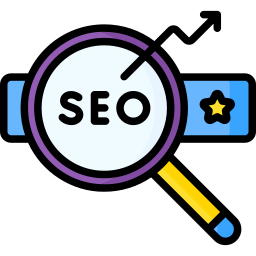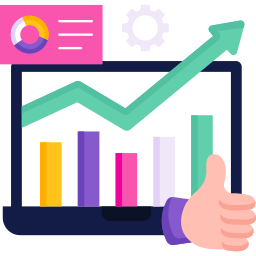Designs That Drive Digital Success
What is Web Design?
Web design is the art of planning and arranging content on a website so that it can be shared and accessed online with the world. It blends both aesthetic and functional elements to shape a site’s appearance, including its colors, fonts, graphics, and user interface (refer to our guide on best practices for web design).
In today’s digital age, creating a website is one of the pillars of having an online presence. As a result, web design is more dynamic than ever, continuously evolving to incorporate mobile apps and user interface design in order to meet the growing demands of both site owners and visitors.

Empowering Brands Through Innovative Web Design


Empowering brands through innovative web design means creating online experiences that not only attract visitors but also engage and inspire the users. By blending creativity with functionality, businesses can showcase their unique identity while providing users with intuitive navigation and compelling visuals. Innovative web design transforms a brand’s online presence into a powerful tool that communicates its values, enhances user interaction, and ultimately drives growth. This approach ensures that each website is not just a digital space but a vibrant extension of the brand, capable of fostering connections and building loyalty.
At DIGIMOODIT, we will empower your brand through innovative web design by offering tailored solutions that prioritize user experience and brand identity. With a focus on cutting-edge design trends and technologies, we will create visually stunning websites that capture the essence of each brand.
Key Benefits of Web Design

Web design plays a crucial role in creating an effective online presence for businesses and individuals.
Here are the key benefits of web design:
1. First Impressions Matter
A well-designed website helps create a positive first impression. When users land on your site, the design can influence how they perceive your brand. An aesthetically pleasing and professional layout makes users feel confident in your services.
2. Improved User Experience (UX)
Good web design enhances the overall user experience. It ensures that the website is easy to navigate, the information is accessible, and interactions are smooth. Clear call-to-action buttons, readable fonts, and well-structured layouts make the site user-friendly.
3. Boosts Search Engine Optimization (SEO)
A well-structured website with clean code and optimized design elements (like fast load times and proper meta tags) helps search engines crawl and index your site better. This can lead to higher rankings, increasing organic traffic.
4. Builds Brand Consistency
Consistent use of colors, fonts, logos, and imagery across the website ensures that your brand identity remains strong. A cohesive look fosters trust and strengthens brand recognition.
5. Competitive Advantage
In a crowded online marketplace, a unique and visually appealing website helps you stand out from competitors. An engaging design can be a key differentiator that gives your business a competitive edge.
6. Support for Business Goals
A website designed with business goals in mind (whether it’s sales, lead generation, or brand awareness) aligns your online presence with your overall business strategy. This ensures that your website contributes to achieving measurable results.
7. Increased Trust and Credibility
A professional-looking website helps establish credibility with potential customers. It reassures them that you are a legitimate and reliable business, increasing the likelihood of them engaging with your services or products.
8. Improved Conversion Rates
A carefully designed site guides users to take specific actions, like signing up for a newsletter, making a purchase, or contacting for more information. Good design minimizes friction, leading to higher conversion rates.
Conclusion
A good web design is like having a welcoming, efficient storefront online—it can make or break your digital presence. In today’s competitive digital landscape, your website is often the first point of contact for potential customers, making it essential that your design reflects the professionalism and values of your brand.
SEO-Friendly Web Design: Boosting Search Visibility


SEO-friendly web design is about creating websites that are easy for search engines like Google to understand and rank, while also being user-friendly. The goal is to ensure that both search engines and users can navigate and enjoy the site. When a website is designed with SEO in mind, it improves its chances of showing up higher in search engine results, which leads to more visitors.
One key aspect of SEO-friendly web design is mobile responsiveness. This means the website works well on all devices, including smartphones, tablets, and desktops. Since more people use mobile devices to browse the internet, search engines prioritize mobile-friendly websites. A responsive design not only makes your site look good but also helps it rank better.
Another important factor is fast loading speed. Websites that take too long to load often see users leave before the page finishes loading. Search engines notice this and may rank slow websites lower. By optimizing design elements like images and code, a fast-loading website can improve both the user experience and search rankings.
Additionally, clear navigation and a clean site structure help search engines crawl and index your website more easily. This means that search engines can quickly find all the important pages and understand how they are related. Features like internal links (links within your website) also make it easier for both search engines and users to discover your content.
In simple terms, an SEO-friendly web design makes sure your website is easy for search engines to read and for visitors to use. This leads to better visibility in search results, bringing in more potential customers to your site.
